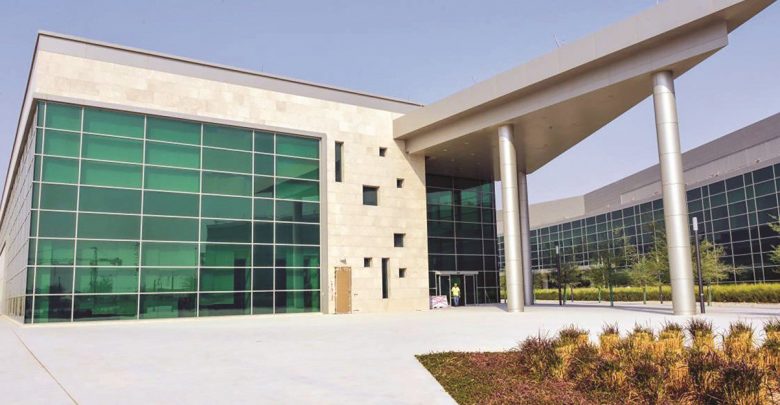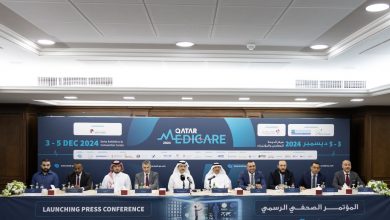
QBRI collaborates with researchers of UK university
«جامعة حمد» تتوصل إلى نتائج رائدة حول «السكري» بالتعاون مع «ووريك» بالمملكة المتحدة
Doha
Qatar Biomedical Research Institute (QBRI), part of Hamad Bin Khalifa University (HBKU), recently collaborated on a study initiated by researchers at the University of Warwick, UK, to examine the impact of normal and high concentrations of glucose on blood vessels.
The findings of the initial study, led by Dr Naila Rabbani from Warwick Medical School, have been published in ‘Scientific Reports’ journal and could help identify new ways to prevent organ damage from complications related to diabetes, according to a press statement.
The research was conducted in collaboration with Prof Paul Thornalley, director of the Diabetes Research Centre at QBRI, whose involvement in the study began when he was professor of Systems Biology at the University of Warwick. The research team is now working to further develop this research, including its application to cell types found in the kidney, eye and nerves of arms and legs that become damaged in diabetes.
Prof Thornalley said, “It is an honour to have contributed to this pioneering research, which is making vital contributions to the study of diabetes and our evolving understanding of the illness. The research team has also gained advantages from bringing QBRI on board – our Diabetes Research Centre is making great strides towards a deeper understanding of diabetes through our innovative research, which is also proving integral to the study.”
According to researchers from the University of Warwick and QBRI, a mechanism in the cells that line blood vessels and help process the sugar glucose, becomes uncontrolled in diabetes patients and could be linked to the formation of blood clots and inflammation.
Dr Omar El-Agnaf, executive director of QBRI, said: “With the growing prevalence of diabetes in Qatar and the region, QBRI is committed to seeking out novel approaches to tackle this key healthcare challenge. We believe that great strides can be made in our endeavours through strategic collaborations, and the ongoing diabetes research with the University of Warwick will help us uncover important insights with global relevance.”
Researchers examined the impact of normal and high concentrations of glucose on human endothelial cells, which form the lining of our blood vessels. By increasing the concentration of glucose in the culture medium, researchers modelled the effects on the human endothelial cells of hyperglycemia – a condition in which an individual’s blood glucose is abnormally high and is commonly caused by diabetes.
Dr Rabbani said, “Mechanisms of organ sensitivity to damage by high glucose concentrations in diabetes are still poorly understood and urgent improvement in treatment of diabetic complication is needed. Our study provides a step advance in understanding these mechanisms.
“Our research has identified a likely key step, increased hexokinase-2 (HK2) in the initiation of development of damage to the blood vessels in hyperglycemia linked to vascular complications of diabetes, such as kidney disease, damage to the retina in eyes and nerves in the arms and legs, and increased risk of heart disease – the major cause of premature death in diabetes. Importantly, we showed how a new type of treatment, Glo1 inducer, can correct this and deserves consideration in the search for improved treatments for diabetic complications.”
The initial study confirmed that glucose metabolism in endothelial cells is increased in high concentrations of glucose. They showed for the first time that this occurs because HK2 degrades more slowly in high glucose concentration and thereby metabolises more glucose than normal. Increased glucose metabolism is the driver of metabolic dysfunction of endothelial cells in model hyperglycemia.
شارك معهد قطر لبحوث الطب الحيوي، التابع لجامعة حمد بن خليفة، مؤخرًا، في دراسة أجراها باحثون بجامعة ووريك في المملكة المتحدة؛ بهدف فحص مدى تأثير التركيزات الطبيعية والعالية للجلوكوز على الأوعية الدموية.
وقد نُشرت نتائج الدراسة الأولية، التي قادتها الدكتورة نائلة رباني من كلية الطب بجامعة ووريك، في مجلة «ساينتفيك ريبورتس»، ويمكن أن تساعد الدراسة في تحديد طرق جديدة لمنع تلف الأعضاء بفعل المضاعفات المرتبطة بداء السكري.
أُجري البحث بالتعاون مع الدكتور بول ثورنالي، مدير مركز بحوث السكري في معهد قطر لبحوث الطب الحيوي، الذي بدأت مشاركته في هذه الدراسة عندما كان يعمل أستاذاً لعلم أنظمة الأحياء في جامعة ووريك.
ويعكف الفريق البحثي الآن على تطوير هذا البحث بشكل إضافي، عبر دراسة إمكانية تطبيقه على أنواع الخلايا الموجودة في الكلى، والعيون، وأعصاب الذراعين والرجلين التي تتعرض للضرر بفعل داء السكري.
وقال الدكتور بول ثورنالي: «تشرّفت بالمشاركة في هذا البحث الرائد الذي يقدم إسهامات حيوية في دراسة السكري، ويعزز من فهمنا لهذا المرض».
وأضاف: «استفاد فريق البحث من مشاركة معهد قطر لبحوث الطب الحيوي، حيث يحرز مركز بحوث السكري التابع للمعهد تقدماً كبيراً على طريق الوصول إلى فهم أعمق لداء السكري، من خلال بحوثنا المبتكرة التي تبرهن كذلك على أنها جزء لا يتجزأ من هذه الدراسة».
وقال الدكتور عمر الأجنف، المدير التنفيذي لمعهد قطر لبحوث الطب الحيوي: «مع تزايد انتشار السكري في قطر والمنطقة، يلتزم معهد قطر لبحوث الطب الحيوي بالسعي للوصول إلى طرق جديدة لمواجهة هذا التحدي الرئيسي في مجال الرعاية الصحية.
وقد فحص الباحثون تأثير التركيزات الطبيعية والعالية للجلوكوز على الخلايا البطانية للإنسان، التي تشكل بطانة الأوعية الدموية، عن طريق زيادة تركيز الجلوكوز في وسط الاستنبات. وقام الباحثون بنمذجة التأثيرات على الخلايا البطانية لفرط سكر الدم، وهي حالة يكون فيها مستوى الجلوكوز في الدم لدى الفرد مرتفعاً بشكل غير طبيعي، وينجم عادة عن مرض السكري.
وأكدت الدكتورة نائلة رباني، من كلية الطب بجامعة ووريك، أن «آليات حساسية أعضاء الجسم للإصابة بالضرر بفعل التركيزات العالية للجلوكوز في داء السكري مبهمة، لافتة إلى ضرورة إجراء تحسينات عاجلة في علاج مضاعفات السكري. وتوفر دراستنا خطوة إلى الأمام على طريق فهمنا لتلك الآليات».



